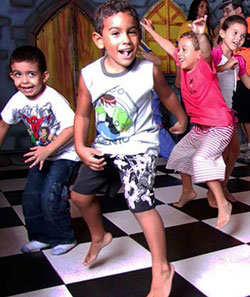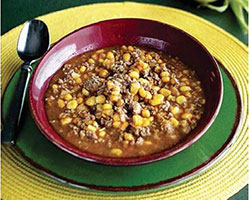Dance…A Way to Improve Fitness
Tracy Trumper, Family & Consumer Extension Agent, Phillips County

All physical movement can have fitness benefits, but movement while dancing improves more than your muscles. Babies move to communicate their needs to parents, like stretching and yawning to show they are tired, or pulling their knees up to their chest to show they have an upset stomach. Young children are constantly moving to express themselves, to mimic something they have observed, or just because it feels good. When movement is combines with the rhythm of music it becomes dance and the physical, emotional, social, and cognitive benefits multiply.
Benefits of Dance Include:
- Physical Benefits: Dance improves range of motion, muscle tone, bone strength, coordination, strength and endurance. Because dancing requires a pattern of movements, it helps memory as well.
- Emotional Benefits: Creative movement allows children to express their emotions. Researchers at the Mayo Clinic have found that social dancing educes stress and increases energy levels. Dancing can improve self-esteem, because it improves feeling comfortable in your own body and how it moves. Children have the opportunity to positively interact with others in an organized way while dancing.
- Social Benefits: Children learn how to communicate and express ideas with others in a group setting. There is cooperation and interaction in dance that helps children appreciate themselves and others.
- Cognitive Benefits: Like other kinds of physical activity dancing increases blood flow, which in turn brings more oxygen to the brain. Studies show that children learn the best by doing. Dance is a wonderful way for children to learn. Learning while moving is called kinesthetic learning.
Tips for Success:
- Demonstrate creative movement or dance with young children to help them feel comfortable expressing themselves through movement.
- Have different types and rhythms of music playing at different times.
- Occasionally let children pick the music they want to dance to. Let them create their own rhythm and movement style.
- Have fun.
- Finish dancing by stretching.
- Consider enrolling your child in a dance, gymnastics or cheerleading class to experience different forms of movement.
Let’s Talk
Explain to children that you are trying to improve your own fitness by dancing more and that they are welcome to join you. Once they hear the music they will likely get moving as well. If that doesn’t work, ask them to help you learn a few new dance moves. At the end of a song or set of songs say something like, “Wow, that was fun and my heart is really beating fast. If I practice dancing, I think I can get better while getting in shape at the same time. I want to remember to take a dance break every day for a week. Let’s make it a family dance break.” Encourage children to keep dancing to more songs (a set of 2-5 songs) each day to build up their endurance and heart health. When children dance with you, let them watch and follow your lead or let them create their own movements.
Additional suggestions:
- Play Simon-Says: Children will learn parts of the body, coordination, and expressive movement. At the same time they will
practice listening skills by playing this game. Start by saying, “Simon says hop on your right foot.” You demonstrate and
explain this movement. The child copies you. Then you explain that if you don’t say Simon says and they do the movement,
they are out of the game. - Teach children basic dances you learned as a child, such as the Hokey-Pokey.
- Talk to toddlers about the movements you see them doing and copy what you see. Such as, “Oh you are running now.” Then,
you would go run with them.
Recipe for Health:
Peter Rabbit Dip
Ingredients:
1 carton (8oz.) plain yogurt
1 package dried vegetable soup mix
Directions:
- Mix ingredients together.
- Refrigerate for 2-3 hours.
- Serve with raw vegetables like carrots, celery, cauliflower, tomatoes, or cucumber wheels.
Remember to cut all vegetables into small pieces and to observe children while they are eating at all times to avoid
choking.
Winter Corn Soup

Ingredients:
½ pound raw ground beef, or 1 cup cooked diced leftover meat/poultry
2 cups water
1 can (15 ounces) whole kernel corn
2 cans (total 30 ounces) cream style corn
1 cup onion, diced
1 Tablespoon chili powder
Salt & Pepper to taste
Directions:
- If using raw ground beef, brown over medium to high heat in a large pot. Drain off fat. If using leftover cooked meat, cut into ¼ – ½ inch cubes and add to pot.
- Add water, corn kernels, cream style corn, onion, garlic, chili powder, salt and pepper to the pot. Mix well.
- Cook over low heat for about 15 minutes. Serve hot.
Picture and Recipe adapted from A Harvest of Recipes with USDA Foods.
Serving Size 1½ cups
Calories 252,
Total fat 7.2g,
Saturated fat 2.3g,
Cholesterol 26mg,
Sodium 497mg,
Carbohydrate
41g, Dietary Fiber
5g, Sugars 7g,
Protein 11gIn






